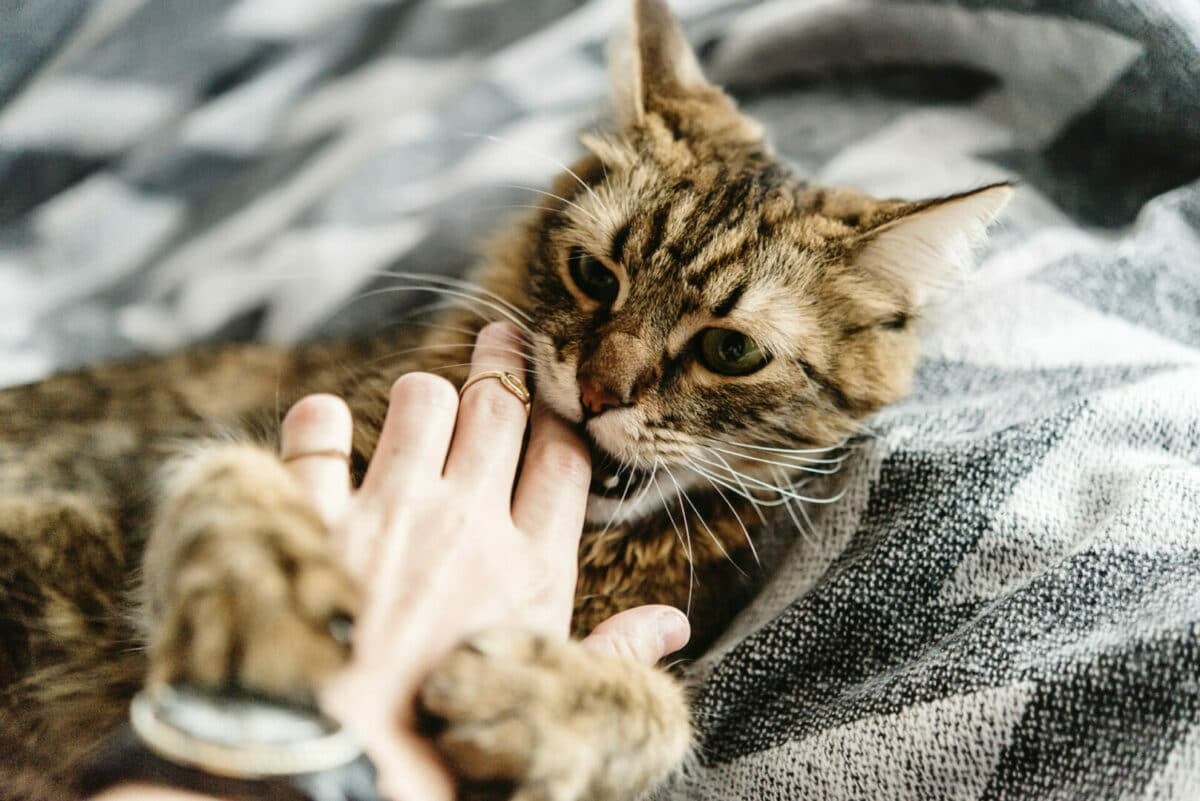In what is likely the biggest no-brainer cat study as of late, UC Davis School of Veterinary Medicine decided to figure out for themselves cat’s intentions when it comes to feeding time. We know that with dogs, puzzle feeders are quite popular. Your cat is not a canine, and they’re not going to let you forget that either. For dogs, these puzzle feeders often serve two necessary functions: to curb fast eating which can lead to gastrointestinal issues, and to combat boredom. Your cat will eat whenever they see fit, and often when cats become bored they’ll eat as a result of which. And, as we know, cats are great at pretending like they’re always starving.
For this specific study, researchers set out to prove if cats would exhibit “contrafreeloading” in order to obtain a meal. If you’re not sure what this term means, it’s best described as “when an animal is provided with a choice between making an effort to obtain food or by eating it from a freely-available source, a curious thing happens.
UC Davis cat behaviorist Mikel Delgado, and her colleagues, Melissa Bain and Brandon Han, offered 18 domesticated felines two choices. The first choice, a food puzzle. And the second, a tray of free food. As the cats entered the room, I’ll let you take a wild guess as to which food presentation they moseyed on over to more times than not.
“It wasn’t that the cats NEVER used the food puzzle, they just used it less, ate less food from it, and typically would eat from the freely available food first.”

And while this isn’t a shock to anyone who has ever owned a cat, it is somewhat surprising to animal behaviorist who have observed contrafreeloading behavior in various species of animals over the past 50 years. It’s a phenomenon which no one person can fully explain, but for many species of the animal kingdom, working for food is often preferred.
Zoo Snippets explains just how interesting this phenomenon is, as “this intriguing behavior seems to directly contradict that an animal always chooses the path of least resistance.”
Contrafreeloading has been observed in both domesticated and wild species of animals, from mice to dogs, even birds, wolves, grizzly bears, and chimpanzees. One theory that proves most accurate in explaining the phenomenon is that animals exhibit this behavior because by doing so, it provides them with much-needed and desired information on their surroundings/environment. (More on that theory here.)
“There are different theories about why animals might contrafreeload, including boredom in captive environments, stimulating natural foraging behaviors, and creating a sense of control over the environment and outcomes,” Delgado said.
The abstract of the study indicated that:
Contrafreeloading is the willingness of animals to work for food when equivalent food is freely available. This behavior is observed in laboratory animals (pigeons, rats) and captive wild (bears) and domestic animals (cows, pigs). However, a previous study of six laboratory cats did not find evidence of contrafreeloading. We hypothesized that cats in a home environment may contrafreeload and that more active cats would be more likely to contrafreeload. We tested 18 house cats for contrafreeloading by comparing feeding choices in the presence of both a food puzzle and a tray of the same size and shape across 10 trials. All enrolled cats wore an activity tracker. Cats consumed more food from the tray than the puzzle (p< 0.05). A binominal test indicated most cats preferred to eat from the tray first and spent more time eating from the tray compared to the puzzle. Our results indicate there is no sign of contrafreeloading among domestic cats. There was no relationship between activity as recorded by the tracker and tendencies to interact with the puzzle. Further research is required to understand why among tested animals, only cats seem to not express contrafreeloading behavior.
Aside from the fact that many of us might think that cats are simply too intelligent to do a puzzle for food when they know good food is right there waiting for them, there could be an actual reason. The UC Davis team thinks that perhaps the fact that puzzles do not mimic the hunting behavior of cat’s predatory instinct, a puzzle feeder simply isn’t of interest to them. We know for a fact that cats love to be mentally stimulated, and boredom in cats is a real thing. And, as many cat owners know, when a cat’s enrichment is lacking, it can directly result in destructive behavior.
If you have some free time and want to try some hands-on research for yourself, see if your cat passes the contrafreeloading test. You just might be surprised to see how they react!
Did you learn anything new and interesting about our feline friends? Share this article with other cat lovers that you know so that they can learn something, too.






